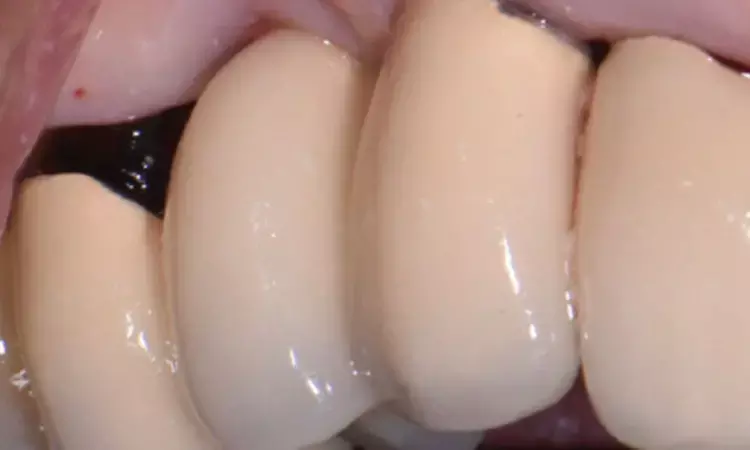- Home
- Medical news & Guidelines
- Anesthesiology
- Cardiology and CTVS
- Critical Care
- Dentistry
- Dermatology
- Diabetes and Endocrinology
- ENT
- Gastroenterology
- Medicine
- Nephrology
- Neurology
- Obstretics-Gynaecology
- Oncology
- Ophthalmology
- Orthopaedics
- Pediatrics-Neonatology
- Psychiatry
- Pulmonology
- Radiology
- Surgery
- Urology
- Laboratory Medicine
- Diet
- Nursing
- Paramedical
- Physiotherapy
- Health news
- Fact Check
- Bone Health Fact Check
- Brain Health Fact Check
- Cancer Related Fact Check
- Child Care Fact Check
- Dental and oral health fact check
- Diabetes and metabolic health fact check
- Diet and Nutrition Fact Check
- Eye and ENT Care Fact Check
- Fitness fact check
- Gut health fact check
- Heart health fact check
- Kidney health fact check
- Medical education fact check
- Men's health fact check
- Respiratory fact check
- Skin and hair care fact check
- Vaccine and Immunization fact check
- Women's health fact check
- AYUSH
- State News
- Andaman and Nicobar Islands
- Andhra Pradesh
- Arunachal Pradesh
- Assam
- Bihar
- Chandigarh
- Chattisgarh
- Dadra and Nagar Haveli
- Daman and Diu
- Delhi
- Goa
- Gujarat
- Haryana
- Himachal Pradesh
- Jammu & Kashmir
- Jharkhand
- Karnataka
- Kerala
- Ladakh
- Lakshadweep
- Madhya Pradesh
- Maharashtra
- Manipur
- Meghalaya
- Mizoram
- Nagaland
- Odisha
- Puducherry
- Punjab
- Rajasthan
- Sikkim
- Tamil Nadu
- Telangana
- Tripura
- Uttar Pradesh
- Uttrakhand
- West Bengal
- Medical Education
- Industry
Teeth adjacent to implants in posterior sextants more liable to develop secondary caries

Teeth adjacent to implants in posterior sextants more liable to develop secondary caries suggests a new study published in the Clinical Implant Dentistry and Related Research
Dental implants are an artificial substitute for extracted or missing teeth in the oral cavity and are valuable for improving dental health and quality of life. While many studies on implants can be found, few studies examine their effects on adjacent teeth and tissues. The study aimed to examine complications of teeth adjacent to dental implants in the posterior region.
In this retrospective case–control study, clinical data of patients treated with implants in the posterior segment were extracted from the medical records in a single community dental clinic between January 9, 2010 and January 9, 2020. The patients were examined clinically and radiographically every 6 months. Data on the adjacent teeth to the dental implants were collected and divided into two groups, complications (“study group”) versus no-complications (“control group”). Multivariate logistic regression analysis was performed to find a possible correlation between the complications and the variables checked, followed by checking specific variables in the complication group.
Results
A total of 1072 patients were included in the study. There were 179 patients (16.7%) with complications in adjacent teeth, while 893 patients had no documented complications. Predisposing factors for secondary caries were smoking (OR = 2.2, CI = 1.3–3.8) and a higher number of implants (OR = 1.6, CI = 1.1–2.5). Tooth crack and tooth fracture were analyzed together and found to be related to osteoporosis (OR = 8.9, CI = 2.9–27.6), whereas males were more prone to teeth fracture (OR = 2.8, CI = 1.1–7.4). Tooth mobility was related to a higher number of implants (OR = 16.5, CI = 3.7–73.8). Further analyzing the complication group solely, there was a statistical significance for age in primary caries and tooth mobility (p = 0.045). In addition, a higher number of implants was more prevalent with tooth mobility (p = 0.002), wider implant platform was more significant with primary caries (p = 0.012), and periodontal Stage III was more prone to tooth mobility (p < 0.001). The distance between the implant and adjacent tooth was also statistically significant—close proximity with tooth mobility and high distance with dental caries (p = 0.04).
Researchers found a relatively high rate of complications in teeth adjacent to dental implants. Secondary caries was the most common complication. Good understanding and proper position of the implants is essential to avoid adjacent teeth complications.
Reference:
Dr. Shravani Dali has completed her BDS from Pravara institute of medical sciences, loni. Following which she extensively worked in the healthcare sector for 2+ years. She has been actively involved in writing blogs in field of health and wellness. Currently she is pursuing her Masters of public health-health administration from Tata institute of social sciences. She can be contacted at editorial@medicaldialogues.in.
Dr Kamal Kant Kohli-MBBS, DTCD- a chest specialist with more than 30 years of practice and a flair for writing clinical articles, Dr Kamal Kant Kohli joined Medical Dialogues as a Chief Editor of Medical News. Besides writing articles, as an editor, he proofreads and verifies all the medical content published on Medical Dialogues including those coming from journals, studies,medical conferences,guidelines etc. Email: drkohli@medicaldialogues.in. Contact no. 011-43720751


